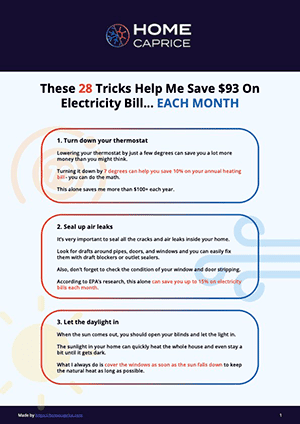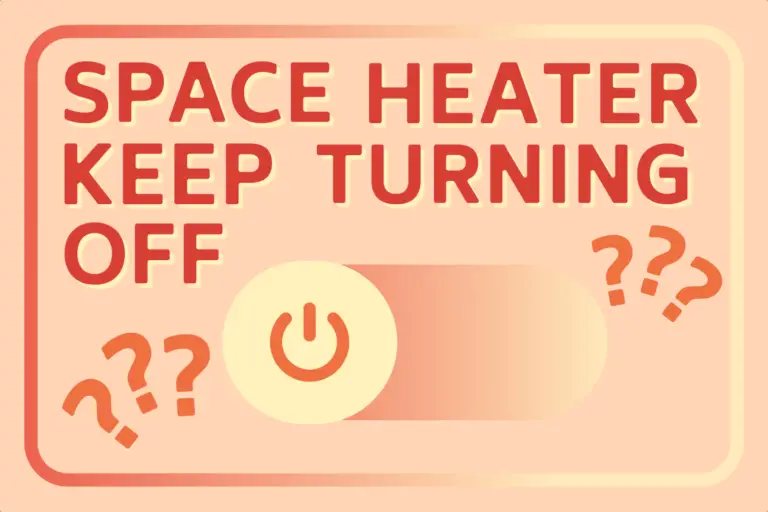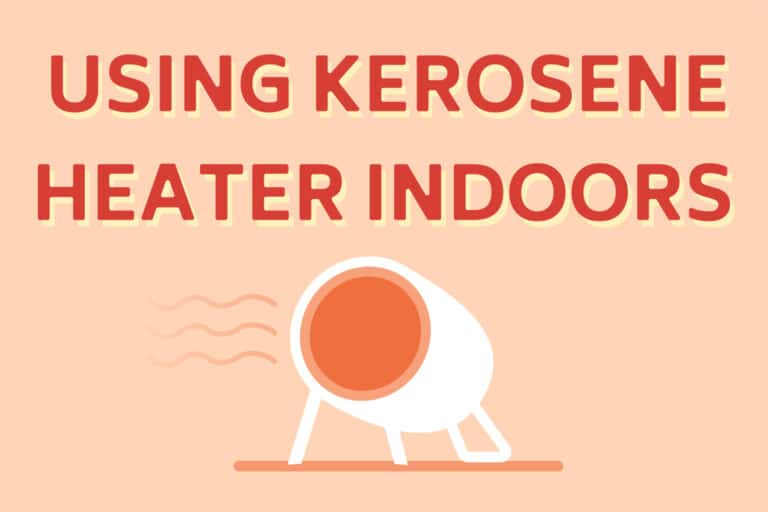Choosing the right oil heater can be challenging, and like many people, you want to know which will be the best value and fit for your home.
Well, in this article, I will cover the most commonly asked question about oil-filled heaters. This should help you determine whether an oil-filled heater is right for you!
❗️ We have a new video of everything you need about oil-filled heaters.
How long do oil-filled heaters last?
On average, oil-filled radiators should last at least 20 years, but it depends greatly on usage.
If you’re using it inside your home as a heat supply or in the basement, it can last you more than 30 years.
If you use it in a workshop occasionally, it should last over 20 years.
On the other hand, if you’re using it as a primary heat source inside your home, you can expect it to last between 15 to 20 years.
If you’re wondering why lifespan depends on the situation, it’s because it’s affected by exposure to temperature changes and weather.
Also, the crucial factor is how often you use it.
That’s why oil heaters will last well over 30 years when they’re used occasionally compared to being used as your primary heating source.
How long do oil-filled radiators stay hot?
Oil-filled radiators tend to heat up more slowly than their oil-free counterparts, but as a result, they also cool down more slowly as well.
Depending on the external temperature, it could take anywhere from an hour and a half to two and a half hours for oil-filled radiators to cool down.
The main reason for this is the diathermic oil that is used to distribute the heat to the surroundings.
It has a very high heat capacity and thus can absorb a lot of heat without rising in temperature by a single degree.
This means it can radiate out heat for a long time without cooling down.
A normal 2 kW oil-filled radiator will be slow to cool down so that you can actually save on power and leave the room hot for a longer time than if you were using an oil-free radiator.
This is in direct contrast to a fan heater which dies down almost instantly once turned off and doesn’t leave much residual heat at all.
This accumulates fewer operating hours and hence cuts down on the total annual energy bill.

Download this FREE cheat sheet to find 28 tricks that can help you save on your electricity and heating bill each month.
Click here to get a FREE Cheat-SheetWhich is cheaper to run: an oil-filled radiator or a halogen heater?
Studies conducted on the operation and economics of halogen heaters vs. oil-filled radiators have shown that the former are cheaper to buy and cheaper to run as well.
A typical 1.5 kW oil-filled radiator may cost you nearly $60 and will cost nearly $0.27 to the operator per hour. However, you can get a halogen heater for nearly $25 and it will cost $0.22 to operate per hour.
These are the cheapest estimates for each category, and the quality for each purchase can’t be ascertained for every model across the board.
However, these estimates are by the Center for Sustainable Energy in the UK and correspond to a general study of the appliances.
Some important distinctions to take into account are that halogen heaters heat spaces faster but they don’t work well in large spaces, and though oil-filled heaters heat up rooms slowly, they stay heated for longer and work for large rooms as well as small spaces.
For a more detailed look at halogen and oil heaters compared, check out our useful guide.
Oil heater vs. fan heater cost
Fan heaters are extremely economical for small spaces. They can cost less than $15 to over $40, and heat up small spaces very fast. However, they don’t keep rooms very hot after they’ve been turned down and cool down very fast.
In contrast, oil-filled heaters can cost anywhere from $60 to over $100, but they provide a much more longer-lasting heated environment and can take hours to cool down.
For a full guide on an oil heater vs an electric heater (pros & cons of each) check out our useful guide.
Do you have to refill oil-filled radiators?
This is one of the most common misconceptions about oil-filled heaters. The oil in the heater doesn’t act as fuel, but a vessel for the heat that is dispersed externally. The heater actually operates on electric power.
The electric coil heats the oil within the heater and the heat transfer is first carried out through convection and then radiation. The oil, consequently, doesn’t burn or even evaporate inside the radiator. So you do not need to re-fill an oil heater.
Do oil heaters use a lot of electricity?
Oil heaters do require a longer period of operation than, say, fan heaters or halogen heaters. This is because the heating element inside is used to heat the oil present inside and radiate the heat outwards. However, that also means that an oil-filled radiator can heat a room for longer than either a fan heater or a halogen heater.
An oil-filled radiator doesn’t use much more electricity than a halogen heater.
(See which is cheaper to run oil filled radiator or halogen heater) or a fan heater (see oil heater vs. fan heater cost).
Are oil-filled heaters efficient?
Oil-filled heaters are known to be extremely efficient. They can be moved from room to room so that their heat can be distributed where it’s needed most. And they’re rated to be nearly 99% energy efficient.
Almost all the electricity that is consumed by the heater is converted directly into heat. Less than 1% of energy is diverted to control panels and extra features. These extra features can include a thermostat, a timer, and energy settings which can modify the electric power consumed by the heater.
The reason for this efficiency is the diathermic oil used instead of water. The oil has a high specific heat capacity and so it can absorb a lot of heat before its temperature rises even a single degree. This makes it capable of holding a large amount of heat. This also enables it to keep radiating heat out after the heating element has been switched off.
Are oil heaters ok around babies?
Oil heaters are considered to be one of the safest heaters to use for baby’s rooms and are a very common choice for a nursery.
The great thing about oil heaters is they maintain room temperature quite well and have an even heat. Most come with a thermostat, and you can set timers to turn the heater on and off as needed.
As babies do not regulate temperature well oil filled heater with a thermostat is a good choice to help maintain a consistent temperature. This is in stark contrast to fan heaters which heat up very quickly and don’t have a timer option or thermostat in many cases.
Fan heaters also don’t keep the room warm for very long so there isn’t any incentive to install them if you want your baby’s room to stay temperate for long. Like any heater, there is an element of danger so safety is always something to consider. Some fins on an oil heater can get hot to touch.
Although you are likely not expecting your baby to climb around the room, it is always something to be aware of.
Do oil-filled heaters emit carbon monoxide?
Oil-filled heaters don’t actually burn any oil while they’re operating so they don’t generate any external gases.
They simply heat the air already present in the room. Hence, there is no danger of them generating any carbon monoxide.
Can you use an oil-filled heater on the carpet?
Oil-filled heaters don’t glow red hot as some space heaters do, but that doesn’t mean you shouldn’t keep them away from combustible materials.
There is a slim chance of oil leaking which could potentially be an issue, but in general oil-filled heaters are safe to use on carpets.
What size oil-filled heater do I need?
The wattage of an oil-filled heater refers to the maximum output of electrical power, but don’t let that rating fool you. This doesn’t correspond to the effectiveness of that appliance.
A poorly designed high-wattage heater can be inefficient and not heat your room the way you want and a mid-range wattage heater with high efficiency can do much more. The other thing to keep in mind is the volume of the space being heated.
The larger your room, the more wattage you’ll need to heat it. This has to do with the heat that can dissipate within the confines of a large room vs. that of a small room.
Here are a few steps to help you size the heater:
- Measure the room’s area. Use a tape measure to take the length, breadth, and height of the room in order to get the area and the volume of the room that you’re heating.
- Calculate the wattage that the room may need. You can estimate around 10 W per square foot. Hence, if you have a room that measures 100 square feet, you need to get a 1 KW heater to properly heat the room. (Remember efficiency counts here more than wattage)
- Convert the Watts into BTUs. A single watt is equal to 3.41 BTUs. This conversion will help you figure out which heaters to buy, especially in the US market.
- Consider Miscellaneous Factors. If the room that you’re considering for a heater has a lot of windows or is badly insulated, or if it has a high ceiling or a staircase, then you should consider those things before getting a heater with the proper wattage. A room that loses heat through a lot of heat sinks requires a higher wattage.
What kind of oil is in an oil-filled heater?
Oil-filled heaters carry diathermic or diathermal oil. This oil is mainly designed for heat transfer and has a very high specific heat capacity. This means that the oil can absorb a very large amount of heat energy without rising in temperature by even a single degree.
What this translates into is a very capable heat sink that can store copious amounts of heat energy and ultimately retain it for a long period.
Diathermic oil has the added advantage of boiling at very high temperatures. The oil-filled radiator needs the oil to act as a heat transfer medium rather than a fuel, so it’s very important that the quantity of oil doesn’t deplete in any way through evaporation or combustion.
Not only would this damage the heater but cause external harm to the users. Diathermic oil takes a long time to boil.
It has a variable boiling point since it’s a mixture, and it only begins to boil at 300 C, an unbelievably high temperature before which the heater can be turned off or set at a temperature where it never crosses that threshold.


Download this FREE cheat sheet to find 28 tricks that can help you save on your electricity and heating bill each month.
Click here to get a FREE Cheat-Sheet




